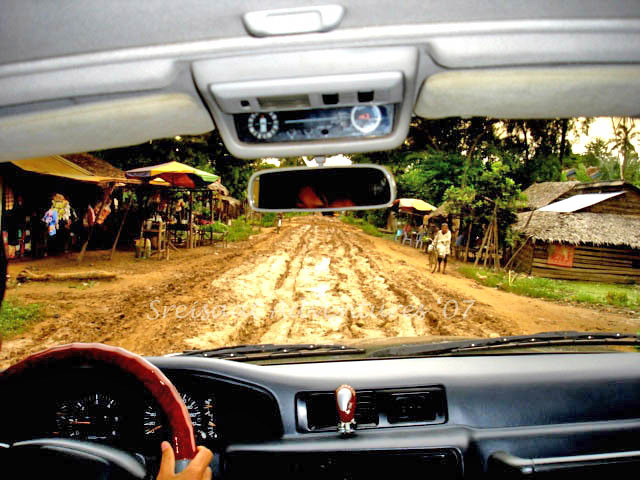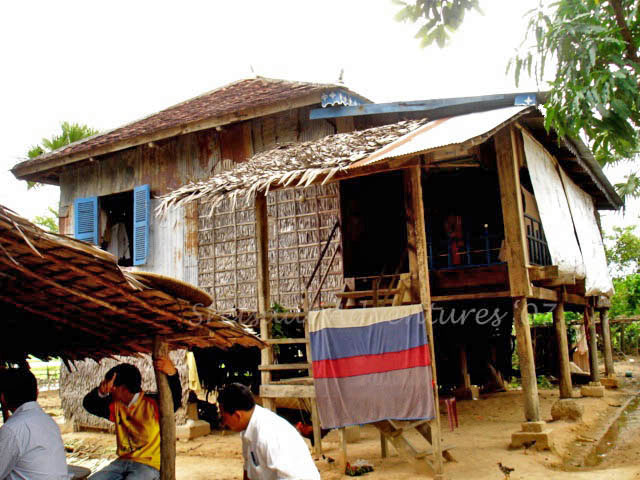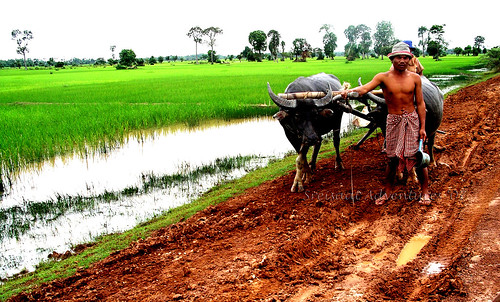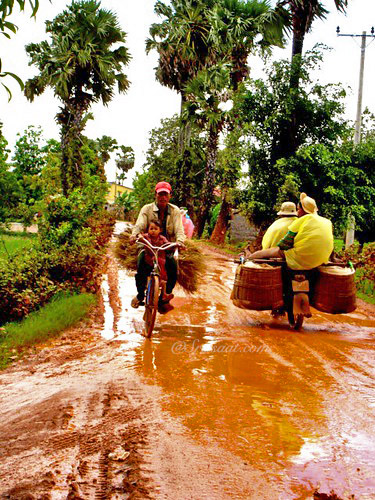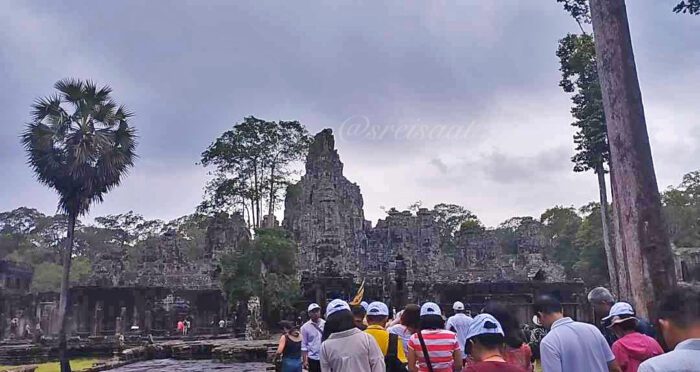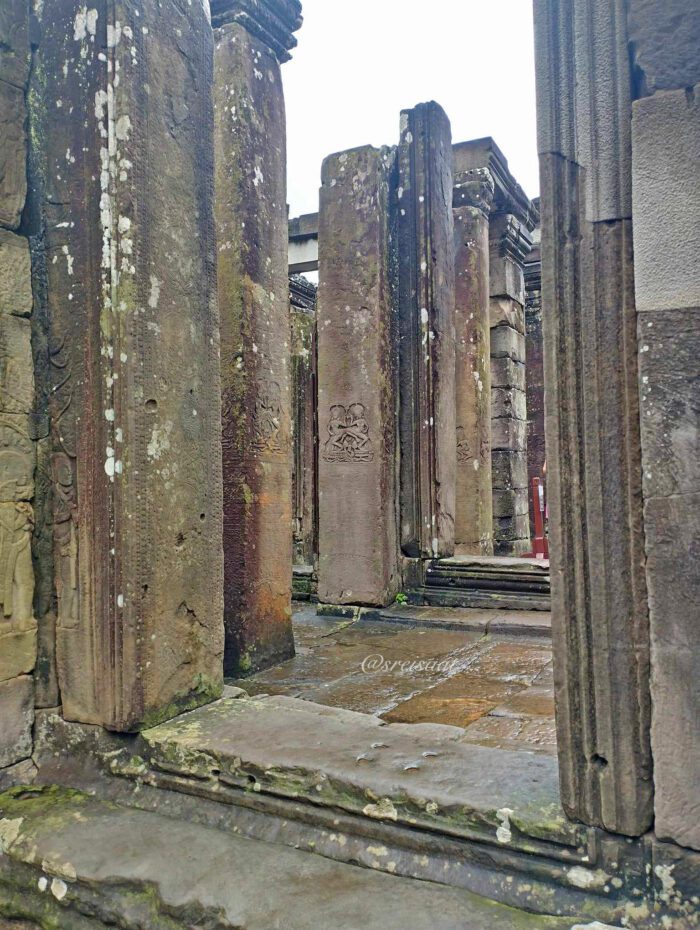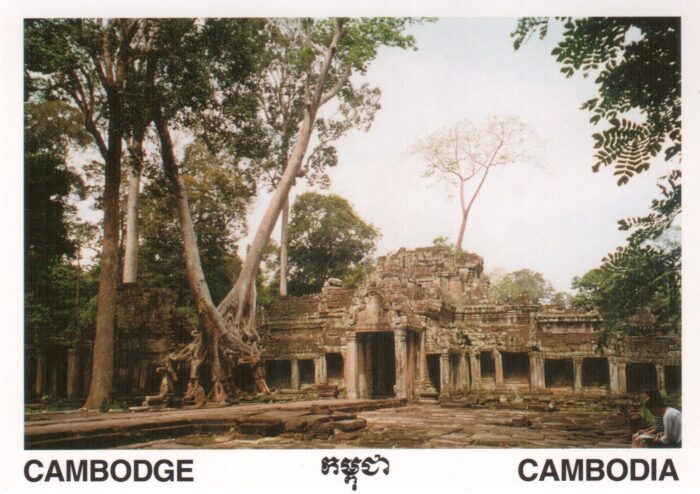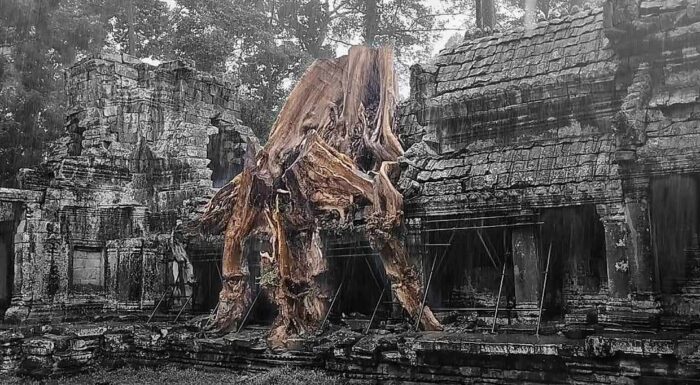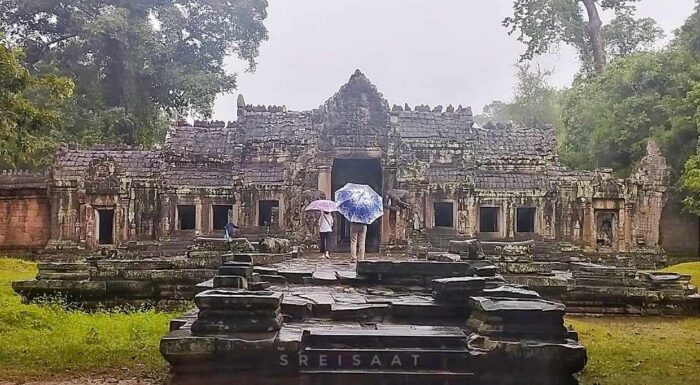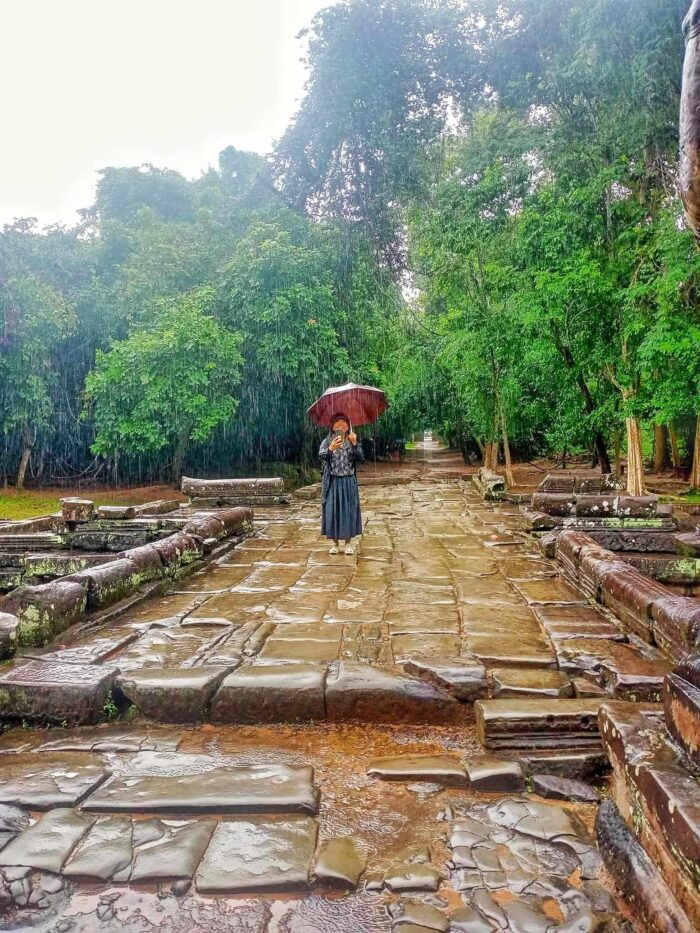In this week’s My Corner of the World and Skywatch Friday, I’m taking you on a journey back in time to the early 2000s, when I worked in a development project with IDRC in rural Cambodia. The photos you see here were taken during that period, and hopefully gives you a glimpse of the beauty and challenges of life in remote villages during the rainy season, specifically the Kamchai Mear district in Prey Veng province and Damnak Chang’aeur district in Kep province.

Back then, there were no fancy, China-built roads. Traveling from Prey Veng town proper to Kamchai Mear was an adventure, to say the least. Our trusty 4WD, a symbol of progress in that context, would battle its way through mud, potholes big enough to swallow it whole, and the relentless rain. The journey that normally took an hour or so from Prey Veng town proper stretched to three during the rainy season. I’m not kidding.
These pictures showcase the reality of life for rural Cambodians. The muddy roads became impassable, turning a simple trip to the market or school into an obstacle course, and small businesses faced logistical challenges. Public transportation was nonexistent, leaving motorbikes and the occasional taxis (usually very old Toyota Camrys) as the only options – options that often got stuck in the mud themselves or getting bogged down, whichever comes first.

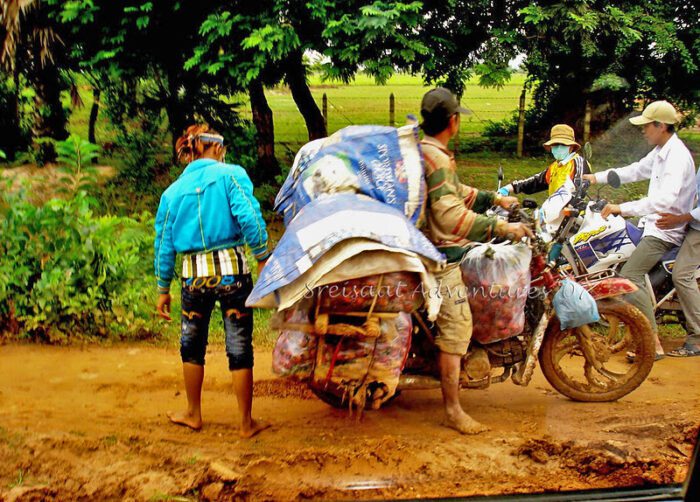
The limitations went beyond transportation. Reaching these villages meant a stay of several days and embracing a completely different way of life. There were no hotels, so nights were spent wherever darkness found us. Often, this meant relying on the hospitality of the villagers, offering a space in their house (or even under their house, with the farm animals!) to rest and spend the night. Electricity and running water were luxuries these communities did not have.
One night, we found ourselves welcomed into the home of a kind farmer and his wife. Their hospitality was especially heartwarming because their family included a one-year-old baby. The space was undivided, so we improvised and used a blanket to create a partition for a sense of privacy. That night, however, the baby’s cries shattered the quiet. As it turned out, the little one, likely searching for his mama’s breast in the darkness, had somehow navigated his way right next to where we were all sprawled out! Imagine the scene – a tiny figure crawling between us single women in that cramped space, in the dark! Despite the initial shock and the disrupted sleep (courtesy of a very hungry baby!), we couldn’t help but chuckle about it the next days. Funny, unforgettable experiences like this have a way of melting away the travel difficulties.
On another occasion, the inevitable happened – our 4WD got stuck in the mud. With no other option, we had to slog through the mud on foot, barefoot! To this day, I can still feel and hear the way my feet squished with every step. Washing our feet off immediately was crucial – that clayey mud, if left to dry, would harden like cement on our skin. Nature sometimes calls at the most inconvenient times, and these muddy journeys were no exception. With no toilets in sight, we’d have to disappear into the bushes. Hiding in the bushes with my trusty malong for a makeshift privacy became a skill I never thought I’d need! Let’s just say the fear of encountering snakes during these “bathroom breaks” definitely added a layer of nervous excitement – an experience I wasn’t eager to repeat! Oh, the stories I can tell you!
Despite the challenges, these were some of the most rewarding experiences of my career and the highlight of my time as a development worker. I came equipped with a simple backpack: my trusty malong, a hoodie, socks, and a beanie – my armor against the nighttime creatures, anything that might come crawling at night! But the real essentials were my open ears and a heart ready to listen.
The real treasure of my trips wasn’t the scenery, though it was beautiful in its own rugged way. It was the people. I cherished the opportunity to connect with ordinary folks, listen to their stories, understand their hopes and dreams. I wasn’t there as an expert in farming or fishing, but as a recorder of the community’s story. I documented the dynamics that shaped their lives, the factors that influenced the success or failure of development programs. Just as importantly, I documented their triumphs and struggles, big and small. My job was to be a voice for these people, to amplify their stories and bring them to a wider audience and ensure they were heard.
These experiences in rural Cambodia during the rainy season were a baptism by mud. A crash course in humility, resilience, and the power of human connection. It was a constant reminder of the challenges faced by many around the world, the importance of the work we were doing and listening to the voices of those we aim to help, and the profound impact even small changes can have on people’s lives.
The photos might showcase the struggles of the rainy season, but for me, they represent the heart of my development work – connecting with people, understanding their lives, and being a part of something bigger than myself.
